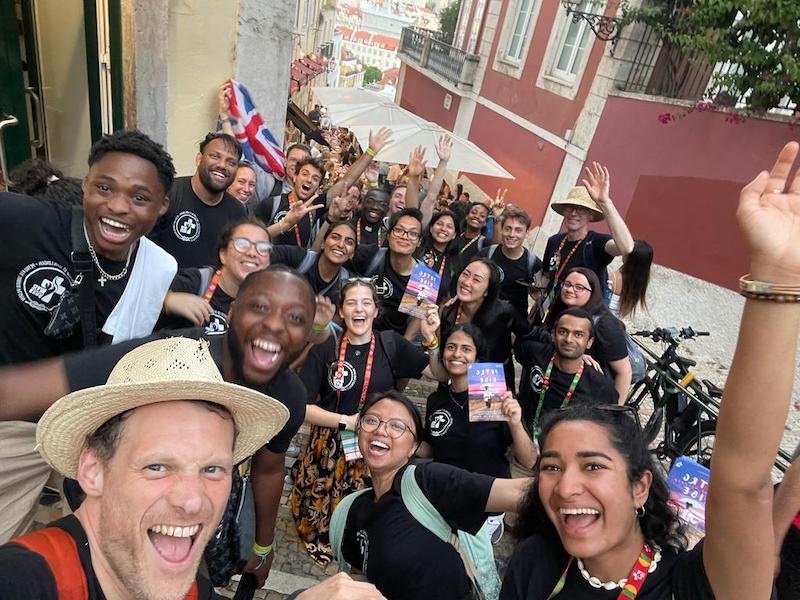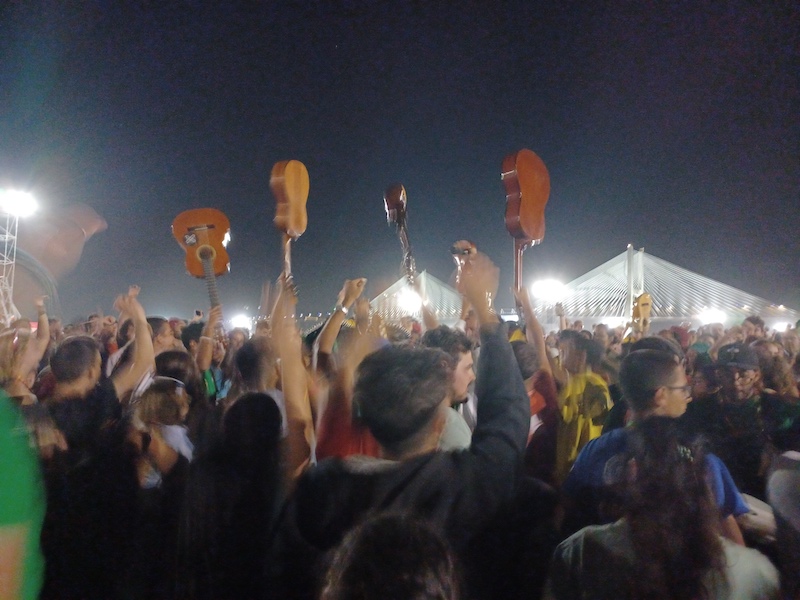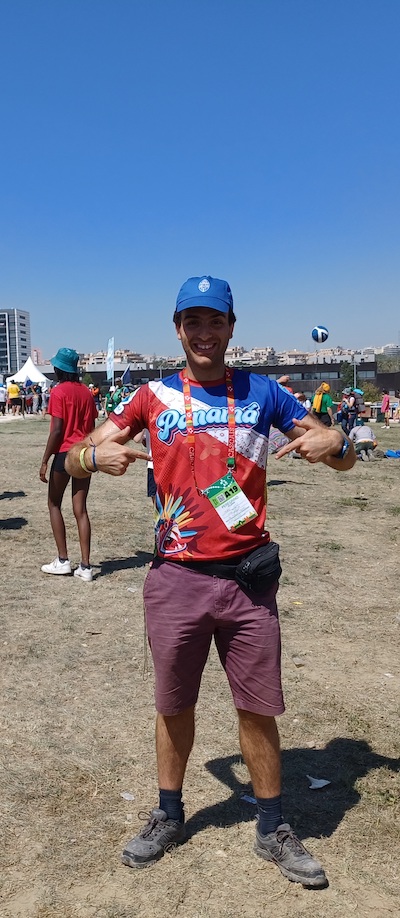Well, what can I say? If there is anything to describe World Youth Day (WYD) in Lisbon, it would probably be the most difficult reflection I would have to do, and it is likely that I wouldn’t be able to accomplish this!
There are no words to describe it! (Joke set aside!) The experience was like no other…

This was my second WYD, with the first one being in Krakow in 2016. Some memories of Krakow came into Lisbon; the kindness of people, the cracking theme song (Há Pressa No Ar), and the explosive atmosphere from all pilgrims.
But this time I went with the Community of St John from Forest Gate, London, as it was nearer to Reading where I live, and some of my friends from Youth 2000 (a youth organisation that I volunteer for) were going with them.
Some of us took the direct journey by flight, and the rest went on coach. I decided to take the latter.
Our journey consisted of going to Paris by Eurostar, staying with the Parisian Community of St John for 1 night, and taking a 24hr coach ride all the way to Lisbon.
Once we arrived, we settled into our accommodation, which was a church and a primary school where we were allocated, laying our sleeping bags on the plain floors of the rooms.
Whenever you go on pilgrimage like this one, there will be an element where we have to leave behind the comforts of our daily lives, and settle to what we already have; a hard floor to sleep on, a simple breakfast, and if you are out of luck, faulty cold showers! But critically, the pilgrimage did impact our sleep; every day was more eventful than the previous, particularly if you took the long way to get to Lisbon.
But let’s put these aside, and focus on the best things ever, shall we?
The Community of St John has multiple branches across the world, and we joined forces with New Zealand, New Jersey USA, Canada, and Taiwan. Every day we took turns to celebrate Mass. We were the first to kick off ours on a basketball ground, where we met the other communities and held small groups talking about the environment and how we can be stewards of God’s Earth.
Then we celebrated Mass, using a Mass setting that one of our friends composed himself.
One of the amazing things about WYD is the numerous amount of languages spoken to express the faith, and that was evident with the other Masses. New Zealand’s bidding prayers were responded in Māori, and Taiwan’s Taizé Service alternated between English and Chinese.
The London group have also been working on a play, and performed it for 1 night only. It was called Petro Kibe: Samurai Pilgrim, which is based upon a figure named Bl Petro Kibe, a Japanese young man, telling the story of his 5000 mile journey from Goa to Jerusalem on foot, and setting sail for Portugal to join the Jesuit priesthood. He then made his journey back home to Japan, only to be persecuted by the authorities and a former priest who renounced his faith, but wouldn’t go down that path nor pull up a fight.
As a thespian pretty much most of my life, I took part in the play, and played Petro’s travel companion, and a priest who was the leader of Jesuit community at Rome.
With God’s Grace, it was a massive success, and all the cast enjoyed it so much!
And now the big part… The Masses with Papé Francisco!
Making our way to these was really something! Floods of other pilgrims from all sides of the streets were making their way, with a good number of human trains to keep everyone together! We took inspiration and formed our own train! Find a spot on the field was also tricky, the space needed to be big enough and in the shade.The first service with the Pope was the Stations of the Cross, featuring a performance by amazing dancers, a full orchestra and choir, and poured so many emotions from a lot of people.
But the main event was at a much bigger park to the east, and involved a big walk there, venturing through the steep hills of Lisbon, to reach our new home on the final few days of WYD.
It started with an evening vigil with a lot more performances, from the choir, dancers, and a dazzling drone display. Late at midnight, and small parties were going on, and if there is one nation that can pull off one, it is Mexico! Dozens of people came to dance around the guitarists and drummers, and singing their hearts out of how much enjoyment they have received.
The pilgrimage mercifully and happily came to an end with one final Mass with the Pope, who announced the next WYD in Seoul in 2027.
The theme of this pilgrimage was “Mary arose and went with haste.”
It just goes to show how much energy comes from unity of 1.5 million young Catholics, how much we can learn from them, from cultures, achievements, struggles, and their trade of energy. I see this trade as something that makes the WYD experience very worthwhile, and speaking of trades, there is tradition every WYD to trade souvenirs from each other’s countries.
At the end of the final Mass, a pilgrim from Panama approached me to trade her Panama T shirt with my Wales shirt, and after a bit of deliberation we made the trade!
It shows how connected we are, with a variety of perspectives all referring back to the bigger picture of our faith in Christ. He took 12 spiritually broken men to call them His disciples, and at that moment He called all of us as we were; striving and struggling Catholics.
As we journey together towards our Heavenly Home, let’s reflect on what we are doing refers back to the big picture of our faith, whether it is a striving path or a struggling path, and offer it to Him, whether it will be in the Sacrament of Confession or the Eucharist.
No matter how big or small we got from this experience of World Youth Day, we pray that we’ll put this grace into action and let it transform us.
Thank you so much for reading
God bless you
Mark Aziz
Editor: for more details of World Youth Day 2023 visit the website at https://www.lisboa2023.org/en

